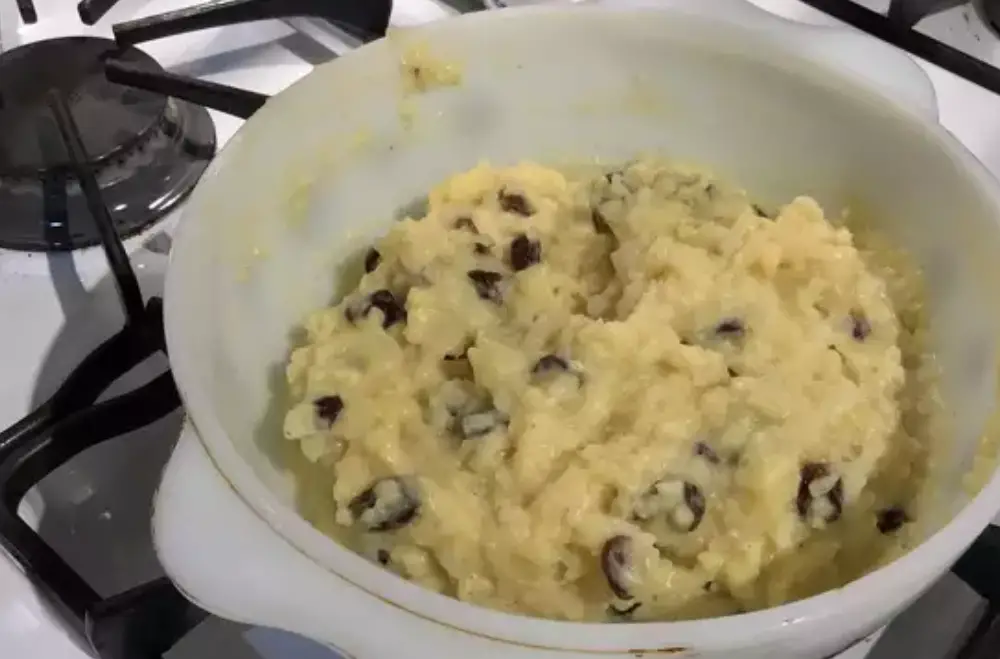Introduction to Creamy Rice Pudding
Creamy rice pudding stands as a quintessential comfort food, tracing its origins back through diverse cultures and histories around the globe. This dessert is celebrated for its simplicity, requiring just a few staple ingredients: rice, milk, sugar, and often cinnamon or vanilla for added flavor. The dish’s appeal lies in its versatility; it can be served warm on a cold day, providing a comforting, creamy texture, or cold as a refreshing sweet treat.
At its core, creamy rice pudding is about transforming modest ingredients into a dish that feels indulgent and comforting. The type of rice used can vary, with short-grain varieties like Arborio being favored for their ability to become tender and creamy without disintegrating. Milk, the main liquid component, is often combined with cream or even coconut milk in some variations to achieve the desired creamy consistency. Sugar adds sweetness, while spices like cinnamon and vanilla contribute depth and fragrance.
The preparation of creamy rice pudding can range from simple stovetop methods to more elaborate baked versions, each method offering a different texture and complexity to the dish. Some recipes call for stirring the rice in the milk until it breaks down and becomes part of a thick, creamy base, while others suggest baking the mixture to achieve a custard-like consistency with a golden top.
Creamy rice pudding is not just a dish but a canvas for creativity. It can be adapted to suit dietary preferences, incorporate different flavors, or celebrate seasonal ingredients. From the addition of raisins or nuts for texture to the inclusion of spices like cardamom or nutmeg for a unique taste profile, the possibilities are endless.
This dessert’s enduring popularity is a testament to its comfort and simplicity, making creamy rice pudding a beloved treat in kitchens worldwide. Whether enjoyed as a simple weeknight dessert, a festive holiday dish, or a nostalgic snack, creamy rice pudding remains a timeless classic that appeals to all ages.


Basic Ingredients : Common ingredients used in creamy rice pudding recipe
The foundation of creamy rice pudding is built on simple, wholesome ingredients that blend together to create a comforting dessert. At the heart of every recipe are four essential components:
These ingredients come together in a harmony of flavors and textures that make creamy rice pudding a beloved dessert across cultures. The simplicity of the recipe allows for endless customization, inviting cooks to experiment with additions like raisins, nuts, and other fruits to create their own version of this classic comfort food.
Making creamy rice pudding
Key Techniques for Creamy Texture
Achieving a creamy texture in rice pudding is not just about the ingredients but also about the technique. Here are key techniques sourced from the insights gathered, which when combined, ensure a delightfully creamy and comforting rice pudding:
By paying attention to these techniques, you can master the art of making a creamy rice pudding that is both comforting and delicious. Each step, from selecting the right rice to the final stir, contributes to creating a dessert that’s rich, velvety, and perfectly sweetened.
Advanced Tips and Variations
To elevate your creamy rice pudding and introduce some delightful variations, consider these advanced tips and creative ideas:
These tips and variations encourage exploration beyond the traditional creamy rice pudding, inviting you to customize the dessert to suit any occasion, taste preference, or dietary requirement. The beauty of rice pudding lies in its versatility, allowing for endless creativity in the kitchen.
FAQs on Creamy Rice Pudding
Yes, using leftover rice is a great way to whip up rice pudding quickly. The key is to gently reheat the rice with milk and your choice of sweeteners and flavorings until it reaches a creamy consistency. Adjust the milk quantity as needed since cooked rice won’t absorb as much liquid as uncooked rice.
This is entirely up to personal preference. Some enjoy the comforting warmth of hot rice pudding, especially during colder months, while others prefer the refreshing taste of chilled rice pudding as a cool treat. Both ways offer distinct textures and flavors.
To prevent your rice pudding from becoming overly thick, ensure you’re using enough liquid during the cooking process. If it does thicken more than you’d like, simply stir in a little extra milk until you reach your desired consistency. Remember, the pudding will also thicken as it cools.
Absolutely! Non-dairy milks like coconut, almond, soy, or oat milk can be used as alternatives to dairy milk. Each will impart a unique flavor to the pudding, with coconut milk adding a tropical twist that pairs well with fruits like mango or pineapple.
Conclusion
Creamy rice pudding is a dessert that embodies simplicity and comfort, bringing together basic ingredients to create a dish that’s both versatile and universally beloved. Whether you stick to the traditional methods or explore variations that incorporate different milks, spices, and add-ins, there’s a version of rice pudding to suit every palate. The key to a perfect rice pudding lies in the balance of texture and flavor – a creamy consistency infused with just the right amount of sweetness and aromatic spices.
This guide has walked you through the essentials of crafting the perfect creamy rice pudding, from selecting the right type of rice to mastering the cooking technique that ensures a velvety smooth texture. We’ve also explored advanced tips for customizing your pudding and answered common questions to help you along the way.
In the end, creamy rice pudding is more than just a dish; it’s a canvas for culinary creativity, a source of comfort on a chilly day, and a sweet link to childhood memories for many. So, whether you’re a seasoned pudding maker or trying your hand at this classic dessert for the first time, remember that the best part of cooking is the joy it brings – both in the making and the sharing. Enjoy your culinary adventure with creamy rice pudding, and may each spoonful bring you a little bit of comfort and a lot of flavors.